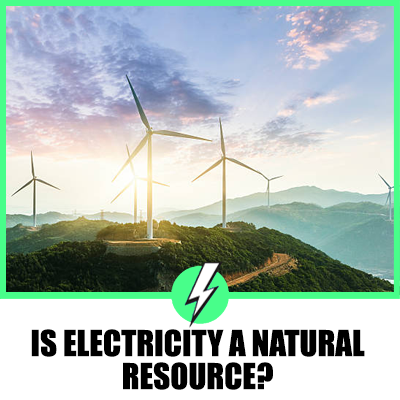Is Electricity a Natural Resource? A Comprehensive Analysis for the UK and US Audiences
Electricity, the lifeblood of our modern world, is an intriguing entity.
Its presence is felt in every aspect of our lives, from powering our homes and gadgets to running industries and infrastructure.
But is it a natural resource?
This question has sparked numerous discussions and debates. To answer this, we need to delve into the nature of electricity and the resources that produce it.

Contents
What Type of Resource is Electricity?
Electricity is a secondary energy source. This means it is generated from the conversion of primary energy sources such as coal, natural gas, nuclear power, solar energy, and wind energy.
It is not a naturally occurring energy phenomenon like oil from the ground. Instead, it must be created and refined at electrical power plants using other energy sources.
This process is known as energy conversion. It’s a fundamental aspect of the energy industry, both in the United States and the United Kingdom, as well as the rest of the world.
In the US, coal and natural gas have traditionally been the dominant sources of electricity. But renewable sources like wind and solar have been growing rapidly.
In the UK, the energy mix has shifted dramatically over the past decade. Coal has been almost entirely phased out and wind power has become the largest source of electricity.
Is Electricity a Natural Resource or Capital Resource?
Electricity, in its natural form, is seen in phenomena like lightning.
However, the electricity we use daily is generated using various natural resources like wind, water, and fossil fuels.
Therefore, electricity is a product obtained using natural resources. And since its natural form cannot be easily harnessed, it cannot be classified as a natural resource.
Instead, it is often considered a capital resource. This is because it is man-made and used to produce goods and services.
This distinction is crucial in the fields of economics and environmental policy. Here, the management of natural and capital resources plays a significant role.
In both the US and UK, the infrastructure to generate, transmit, and distribute electricity represents a significant capital investment. The power plants, transmission lines, and distribution networks are all capital resources that enable the production and delivery of electricity.
How is Energy a Natural Resource?
Energy can be a natural resource when it is derived from the environment around us.
For instance, solar power is harnessed from the sun, wind power from the wind, and hydropower from water.
These are all renewable energy sources. This means they can be replenished naturally over time.
On the other hand, fossil fuels like coal, oil, and natural gas are non-renewable energy sources. They are also considered natural resources, but once used, they cannot be replaced.
Understanding the difference between renewable and non-renewable resources is vital for sustainable energy management.
In the US, the vast plains of the Midwest provide abundant wind energy. Meanwhile, the sunny states of the Southwest are ideal for solar power.
In the UK, the windy coasts and high rainfall make wind and hydro power significant sources of energy.
Which are Natural Resources?
Natural resources are materials or substances that occur in nature and can be used for economic gain.
They include water, air, sunlight, plants, animals, and minerals.
Some natural resources, like sunlight, wind, and water, are renewable. They can be replenished naturally over time.
Others, like minerals and fossil fuels, are non-renewable and deplete with use.
The way we use and manage these resources has significant implications for our environment and our future on this planet.
In both the US and UK, there is a growing emphasis on the sustainable use of natural resources. This includes efforts to reduce reliance on non-renewable resources like coal and oil, and to increase the use of renewable resources like wind and solar power.
Insights from Online Discussions
Online discussions reveal a range of perspectives on whether electricity is a natural resource.
Some argue that electricity is a physical phenomenon recharged and discharged by natural processes.
Others point out that while electricity itself is not a natural resource, it is generated from various natural resources.
These discussions highlight the complexity of defining what constitutes a natural resource.
The Future of Electricity
As we look to the future, the question of electricity as a natural resource becomes even more pertinent.
With the growing emphasis on renewable energy and sustainability, the ways we generate and use electricity are changing.
Solar and wind power are becoming increasingly prevalent. And new technologies are continually being developed to harness these and other renewable resources more efficiently.
In the US, there is a strong focus on developing clean energy technologies and improving energy efficiency.
In the UK, the government has set ambitious targets for reducing greenhouse gas emissions. This includes a significant increase in renewable energy generation.
In conclusion, while electricity is not a natural resource in itself, it is intrinsically linked to natural resources.
Its generation relies heavily on both renewable and non-renewable resources.
Understanding this relationship is crucial for managing our energy use and working towards more sustainable practices.
As we move forward, both in the US and the UK, as well as globally, the conversation around electricity and natural resources will continue to evolve.





